Posted by Elena del Valle on January 19, 2017
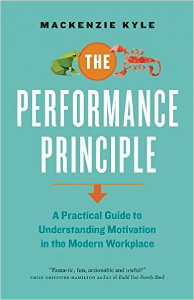
The Performance Principle
Photos: MNP
After Making It Happen, his first non fiction title, was published, Mackenzie Kyle, managing partner for Advisory Services in British Columbia, Canada for MNP, a consulting and accounting firm, he discovered he liked to write and wanted to work on another one. As a result The Performance Principle A Practical Guide to Understanding Motivation in the Modern Workplace (Figure 1 Publishing, $21), was published in 2016. It took four years from his first typed page until it appeared in print.
Written in the form of a novel The Performance Principle features the story of Will Campbell, a newly promoted executive of a firm which has fallen on hard times. Over the course of several tumultuous months, Campbell and his team learn the principles of performance management and the powerful results it can deliver. Kyle’s target audience? Anyone tasked with managing people, from people supervising one other person, to senior managers responsible for large teams. He believes that the ideas in the book are helpful for individuals interested in working more effectively as part of a team; that it can help them to better understand their own motivations, and work more effectively with other teams members.
“My motivation was really two-fold,” Kyle said by email when asked what prompted him to write the second title. “I was looking for an alternative way to communicate a number of ideas around performance management, and I’d had good success with this approach with my previous book (which dealt with project management.). The second reason was fairly personal – I like the writing process, and tackling The Performance Principle was an excuse to do something work-related, that also allowed me to do some creative writing.”
The new book is a sequel to the first book, sharing most of the same characters, who a number of years later are facing some new challenges. The author explained that there is sufficient information about the back story in the new book so it is not necessary to read the first book. At the same time, his approach was similar in both books. The protagonist (Campbell) is the focal point for uncovering the underlying issues, and his sage (his mother-in-law) is the character that brings the ideas about performance management to the team. Kyle wrote the story to help the reader walk through the implementation of the ideas in a (relatively) realistic situation.
When asked why he wrote it in the form of a novel he replied, “I’ve found that wrapping a story around a set of ideas can be a more interesting (some would only go as far as ‘less painful’) way of getting those ideas across. It also provides some context in which people can ‘see’ the ideas in action. I really enjoy the creative writing process, and the challenge of putting the ideas into a story or case study was something I found to be personally interesting (and enjoyable). I keep looking for that job ad for a ‘full time novelist’ but so far haven’t seen it.”
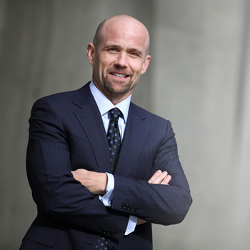
Mackenzie Kyle, author, The Performance Principle
“While I don’t address introverts and extroverts specifically as personality types in the book, I do talk about the reality that different people find different things motivating (or punishing), and how work with that,” the author said when in response to a question about the relevance introvert and extrovert personalities have on the topic. “Recognizing these differences is key to working effectively with a team, and essential for a manager. For example, someone we characterize as an extrovert might find public recognition very rewarding for doing a good job on a particular task; someone we might call an introvert would actually find being singled out in front of the group to be punishing. As a result, they might avoid doing whatever it is that gets them that recognition, even if it’s not the performance we’re looking for.
One caveat though, and that is to avoid pigeonholing people into one category or another. For example, very few are pure extroverts or pure introverts. Instead, they will usually lean toward one side, but have characteristics of the other. This means everyone needs to be treated as an individual when determining what he or she find motivating. Broad generalizations can result in missing the mark, and ultimately less effective performance.”
Kyle has more than 25 years of experience in operations improvement and restructuring, and has provided specific assistance in everything from strategic planning to performance management to managing projects. He has worked in manufacturing, transportation, telecommunications, and the public sector, and internationally in the United States, Australia, New Zealand and Asia.
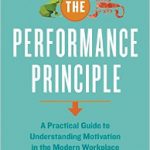
Click to buy The Performance Principle
Comments:
Filed Under: Books
Posted by Elena del Valle on January 9, 2017

Eliza Kubarska, filmmaker, Walking Under Water
Photo: David Kaszlikowski/Vertical Vision Film Studio
A podcast interview with filmmaker Eliza Kubarska is available in the Podcast Section of Hispanic Marketing & Public Relations, HispanicMPR.com. During the podcast, she discusses her film Walking on Water about the Badjao people in Borneo (available on the World Channel website:http://worldchannel.org/programs/episode/dw-s1-111-walking-under-water/) with Elena del Valle, host of the HispanicMPR.com podcast.
Eliza, a Polish alpinist and traveler, specializes in adventure film making and extreme location work. In 2007, she set up her own film company Vertical Vision Film Studio, where she produced her first multi-awarded feature documentary, What Happened on Pam Island, also known as Mountain Love Story. In 2014, Walking Under Water, her next documentary was awarded Hot Docs Jury Prize and John Schlesinger Award at Palm Springs Film Festival.
In her newest film K2 – Touching the Sky, Eliza, together with an international group of grown-up children of acclaimed mountain climbers, sets out on an expedition to reach K2 base camp, the burial place for those who lost their lives on K2 in the summer of 1986.
To listen to the interview, scroll down until you see “Podcast” on the right hand side, then select “HMPR Eliza Kubarska” and click on the play button below or download the MP3 file to your iPod or MP3 player to listen on the go, in your car or at home from the RSS feed. Some software will not allow flash, which may be necessary for the play button and podcast player. If that is your case, you will need to download the file to play it. To download it, click on the arrow of the recording you wish to copy and save it to disk. The podcast will remain listed in the January 2017 section of the podcast archive.
Posted by Elena del Valle on January 3, 2017
What We Can Learn
By Jay Gronlund,
President, The Pathfinder Group
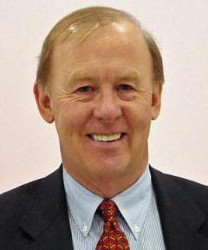
Jay Gronlund, president, The Pathfinder Group
Photo: The Pathfinder Group
Without doubt, Donald Trump’s election victory was a shock to most people, especially pollsters, the news media and those living in urban centers across the country. In some ways, it was a contest of character between the two most unfavorably perceived presidential candidates in history. However, from a branding perspective, the compelling reasons behind each vote was more about what each candidate stood for. And this is what branding is all about – making promises that resonate with people’s intense emotional desires, to connect with them.
Click to read the entire article Positioning the Trump Brand for Victory – What We Can Learn
Posted by Elena del Valle on December 16, 2016

Inkspirations for Christmas Joy
Photos: Health Communications, Inc.
Coloring for adults seem to be sweeping the nation and beyond. If the coloring bug bit you and your are looking for new themes the new additions from Health Communications, Inc. in Deerfield, Florida, all 72 pages, 8.5 inches by 11 inches in size, may interest you. Like Christmas? Inkspirations for Christmas Joy Festive Coloring Designs with DIY Gift Tags, Postcards, Wine Tags and More with original art by Kristin van Lieshout, an artist from Lynchburg, Virginia could be worth a look.

Kristin van Lieshout

Inkspirations for women

Inkspirations for a happy heart
Inkspirations for Women Color Your World Happy 30 Inspiring Designs to Nourish Your Heart and Renew Your Spirit by author Marci Shimoff with original art by Judy Clement Wall (see Author, artist team up on coloring book for women) might be just what you seek for an inspirational and affordable holiday gift. Want to cheer yourself up?



Anna Carey, Beth Logan, and Diane Yi
Inkspirations for a Happy Heart Inspiring Coloring Designs to Lift Your Spirit and Feed Your Soul features original art by Diane Yi, who draws her inspiration from nature, beauty, and the sacredness of the human spirit. According to her biography, her work is in private collections worldwide. She lives near Kansas City with her husband and two dogs.
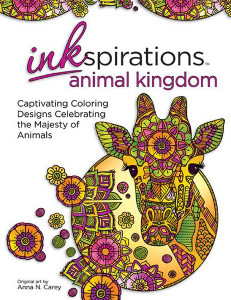
Inkspirations animal kingdom

Inkspirations in the garden
Inkspirations Animal Kingdom Captivating Coloring Designs Celebrating the Majesty of Animals with original art by Anna N. Carey features 32 original designs. Carey has combined her love of animals and her talent as an artist with her passion as an educator. An elementary art specialist she founded Paisley & Hazel Designs, named in honor of her two canine companions.
Like plants? Inkspirations in the Garden Fabulous Floral Coloring Designs Celebrating Life in Full Bloom with original art by Beth Logan may be for you. It includes wildflowers, rose bushes, cottages and gazebos, and a mix of easy designs along with elaborate pages. According to a company representative, the top selling titles from the series are: Fruit of the Spirit, for Women, Recovery, and Animal Kingdom.
Click to buy
Posted by Elena del Valle on December 7, 2016
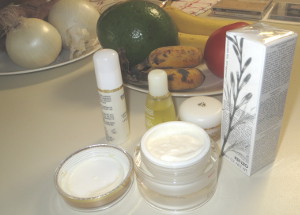
According to Mintel, consumers are most likely to be interested in products with vitamin C, fruit based ingredients, oatmeal, and honey.
Photo: HispanicMPR.com
Last year, facial skin care and anti-aging cream sales declined after experiencing steady growth for years in the past, according to research company Mintel. Although anti-aging products remains the largest segment in the category, it suffered a sales decrease of 6.3 percent from 2014 to 2015. Also, 21 percent of consumers who responded to a Mintel survey said they do not use and are not interested in using anti-aging products compared to 18 percent of consumers who use them.
The overall facial skincare and anti-aging market experienced a 1.4 percent decrease in sales in 2015, falling to $6.6 billion, according to Mintel. Baby Boomers, consumers 55 and older, who took the research company’s survey were the least likely to report usage of nearly every facial skincare product they surveyed, with one third (32 percent) not using any of the surveyed products compared to 19 percent overall.
“While the facial skincare category has experienced tepid sales over the years, in 2015 we saw declines for the first time in five years,” said Shannon Romanowski, category manager, Health, Household, Beauty and Personal Care at Mintel, in a press release. “Moving forward, the category’s success will rely on younger consumers and the growing facial cleanser segment, with an emphasis on natural, recognizable ingredients and innovation like ‘waterless cleansing.’ To broaden the appeal of these products, brands should be proactive in addressing concerns surrounding cost and usage instructions.”
According to Gastronomia Global Beauty and Personal Care Trend, a Mintel survey of 1,613 adults who said they use skincare products, consumers are interested in milder, natural formulations that shield against pollution. One in seven (14 percent) of the respondents believe pollution impacts the appearance of their skin.
Survey takers also said they view lifestyle as an important factor in their skin’s appearance. Many said they are convinced hydration (44 percent) and diet (36 percent) impact skin’s appearance more than using skincare products (26 percent). Another 38 percent said they believe stress impacts the appearance of their skin. Among the survey takers 30 percent said they seek anti-aging products making anti-stress claims.
“Consumers are embracing healthy, holistic living, and our research shows that these lifestyle changes are driving the facial skincare and anti-aging market. In such a saturated marketplace, products featuring natural formulations are standing out to consumers who trust identifiable and natural ingredients,” said Romanowski. “The link between diet and skin is evident, and as consumers increasingly associate their lifestyle with their skin’s appearance, product formulations with added food-based ingredients and vitamins stand out among the competition.”
According to the Mintel report, consumers are most likely to be interested in products with vitamin C (85 percent), fruit based ingredients (78 percent), oatmeal (78 percent) and honey (76 percent); and 72 percent of consumers are interested in products featuring probiotics.
Posted by Elena del Valle on November 28, 2016

Ronaldo Linares, author, Chef Ronaldo’s Sabores De Cuba
Photo: Dalyn Miller Public Relations
A podcast interview with Ronaldo Linares, author, Chef Ronaldo’s Sabores De Cuba (see American Diabetes Association releases diabetes friendly Cuban recipe book), is available in the Podcast Section of Hispanic Marketing & Public Relations, HispanicMPR.com. During the podcast, he discusses his cuisine with Elena del Valle, host of the HispanicMPR.com podcast.
Ronaldo is a Cuban, Colombian, American, salsa-dancing, mixed martial arts-fighting, Cross Fit training, former U.S. Marine, classically trained chef and restaurateur living his dream. Born in Colombia during the turbulent Cartel wars of the 1980s, cooking has been the main ingredient in Ronaldo’s journey from young immigrant to rebellious teen to successful chef and media personality.
Ronaldo has showcased his Cuban-inspired, passion-infused culinary style on Food Network’s Chopped, BBC America’s cross-country chef competition Chef Race, and appearances on Better TV, Fox News and Telemundo. When not in the kitchen, Ronaldo is active in the community, speaking to schools, youth groups and corporations about his life’s journey and healthy living.
To listen to the interview, scroll down until you see “Podcast” on the right hand side, then select “HMPR Ronaldo Linares” and click on the play button below or download the MP3 file to your iPod or MP3 player to listen on the go, in your car or at home from the RSS feed. Some software will not allow flash, which may be necessary for the play button and podcast player. If that is your case, you will need to download the file to play it. To download it, click on the arrow of the recording you wish to copy and save it to disk. The podcast will remain listed in the November 2016 section of the podcast archive.

Click to buy Chef Ronaldo’s Sabores de Cuba
Posted by Elena del Valle on November 14, 2016

Kevin Spelman, Ph.D., EVP, Usana Health Sciences
Photo: Usana Health Sciences
A podcast interview with Kevin Spelman, Ph.D., executive vice president, Research and Development division at Usana Health Sciences, is available in the Podcast Section of Hispanic Marketing & Public Relations, HispanicMPR.com. During the podcast, he discusses the science of cellular communication with Elena del Valle, host of the HispanicMPR.com podcast.
Kevin is a 29-year veteran of the natural products industry. Prior to that, he directed quality control and research and development for the largest manufacturer of liquid extracts in the United States. He is a past National Institutes of Health postdoctoral fellow and Marie Curie research fellow in the European Union, and has published 27 scientific papers. He also advised the White House Commission on Complementary and Alternative Medicine and provided expert testimony to the Maryland House of Delegates and the Maryland Senate.
His past research includes molecular biology of the brain and ovarian cancer, as well as clinical investigations, immunological studies, and chemical analysis on multiple natural products. International research includes the analysis of nutrient levels in teenage girls in West Africa, working with children with neurological disorders in Central America, and researching phytochemicals to treat malaria in Paris. Kevin is also an adjunct assistant professor at Massachusetts College of Pharmacy and Health Sciences, an adjunct professor of botanical medicine at National College of Natural Medicine, and a lecturer at the Maryland University of Integrative Health.
To listen to the interview, scroll down until you see “Podcast” on the right hand side, then select “HMPR Kevin Spelman, PhD” and click on the play button below or download the MP3 file to your iPod or MP3 player to listen on the go, in your car or at home from the RSS feed. Some software will not allow flash, which may be necessary for the play button and podcast player. If that is your case, you will need to download the file to play it. To download it, click on the arrow of the recording you wish to copy and save it to disk. The podcast will remain listed in the November 2016 section of the podcast archive.
Posted by Elena del Valle on November 9, 2016
By Jay Gronlund,
President, The Pathfinder Group

Jay Gronlund, president, The Pathfinder Group
Inequality of pay in business has become a crisis, fueled mainly by the excessive compensation of CEOs, according to a Hudson Institute article by Irwin Stelzer published July 30,2016. In 1965, the average ratio comparing CEO pay to the median worker’s was 20:1. Today CEOs earn more than 300 times, or 300:1. This alarming disparity has stimulated a widespread negative reaction, as the passionate response by Millennials for Bernie Sanders has demonstrated, and is even becoming a clear source of frustration for Hispanics who aspire to get ahead in the U.S. Even more disconcerting is evidence from studies showing that the highest-paid CEOs are often the worst performers. In short, the growing problem of inequality and extreme pay checks for CEOs has undermined the brand trust of many corporations.
Click to read the entire Pay Inequality Jeopardizing Trust In CEOs and Corporate Brands
Posted by Elena del Valle on November 2, 2016
By Jennifer Laszlo Mizrahi*
President, respectabilityusa.org

Jennifer Laszlo Mizrahi, president, respectabilityusa.org
For the first time in history, a TV show staring people with disabilities has been nominated for an Emmy Award– and one of the stars, Cristina, is Hispanic! The glass ceiling-breaking show is Born This Way, A&E Network’s critically acclaimed and award-winning original docuseries which airs Tuesdays at 10 p.m. EST. Born This Way was nominated for Outstanding Unstructured Reality Program. In addition, two episodes were nominated for Outstanding Picture Editing for an Unstructured Reality Program.
The show documents real life as Cristina and her fiancée Angel continue to look forward to their wedding, but have a lot of life skills to master before they are ready to live on their own. Produced by Bunim/Murray Productions, the series follows a group of seven young adults with Down syndrome along with their family and friends in Southern California. Recently, the series was chosen as one of six honorees for the 2016 Television Academy Honors, an award that recognizes television programming that inspires, informs and motivates. That was a wonderful award. However, the Emmys also really matter. Until now, no series starring people with disabilities of any background has ever been nominated for an Emmy Award — and Born This Way includes positive images of Hispanic Americans. We know that actress Michelle Rodriguez has ADD (attention deficit disorder) and superstar Selma Hayek has dyslexia. It is really important when people with disabilities can be seen by the abilities they have.
Click to read the entire article The Emmys: Seeing Hispanics in Hollywood
Posted by Elena del Valle on October 28, 2016
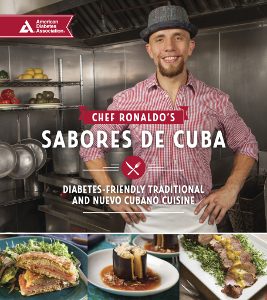
Chef Ronaldo’s Sabores de Cuba
Photos: American Diabetes Association
Are you looking to celebrate the holidays with traditional dishes that are healthy for your family? Chef Ronaldo’s Sabores de Cuba Diabetes Friendly Traditional and Nuevo Cubano Cuisine (American Diabetes Association, $18.95), a bilingual recipe book published this year in Canada, might interest you. Cuban-Colombian Chef Ronaldo Linares spent one year developing recipes and writing his first cookbook for “people who want to get back in the kitchen and discover cooking again, mothers looking to feed their family amazing, healthy, Latino-Cubano food, and the diabetic community that want to change their palate.”
The recipes in the 260-page softcover book are all original and include his takes on oldies from the Cuban people, experiences, and memories of food, the chef explained. Written in English and Spanish the book features 100 recipes as well as information on the importance of farmers markets, kitchen tips from the chef, gluten free flour substitutes, Cuban classics, stews, side dishes and condiments, smoothies, breakfast, salads and surf and turf.
When asked in what significant way his book is different from the many cookbooks published already Linares said by email via a public relations representative, “The book is extremely personal. The stories, recipes, and moments are all real. The book is for the amateur cook at home and also the experienced cook who wants to add more to the arsenal, but overall, the book will make you dance and teach you some Spanish, being that it is bilingual.”
“Life Mostly!” the lively chef said when asked why he wrote it. “It’s what drove me to write them, my legacy, my drive, and I want people to eat my amazing food.”
The biggest challenge of the book project, he said was the time frame he had to complete the work. He had to squeeze time from balancing the restaurant, being a parent, and being a husband.
Linares, a former United States Marine, is a classically trained chef. When not in the kitchen, he is active in his community speaking to schools and youth groups. He was honored by the Statewide Hispanic Chamber of Commerce of New Jersey as Outstanding Culinary Person of the Year.

Click to buy Chef Ronaldo’s Sabores de Cuba
Comments:
Filed Under: Books


































